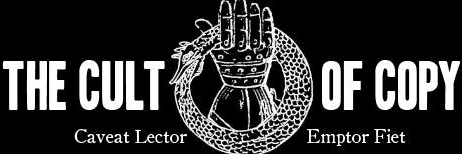“The moment kids start to lie is the moment storytelling begins. They are talking about things they didn't see. It's amazing. It's a wonderful moment. Parents should celebrate. ‘Hurray! My boy finally started to lie!' All right! It calls for celebration.” – Kim Young-ha, Born Nov. 11, 1968
The basis of persuasion is storytelling.
And the basis of storytelling is lying.
We are not reporters. We are spinning straw into gold, and we do it by adjusting, positioning, omitting, embellishing…
Coloring some moment of reality in a particular way makes it more appealing than it might be without you circling and underlining and highlighting the bits you want the reader to consider.
And we are all born with the ability to do this. And it only improves and develops with age.
Kids whose parents read to them very quickly learn to fantasize. TV shows also teach us to create better, more fun representations of reality.
But that’s for amateurs. WE are professionals! We are the ones who CREATE the lies that OTHER, less creative people will pay money for.
“But Colin! Isn't lying in advertising illegal?”
Yes it is.
“But Colin, isn't lying always bad?”
No it isn't.
Look. Every TV commercial that is set in some fictional living room with a fictional mom and kids – that’s a lie. It tells a fictional story which actors portray. That's a fiction. A story. A made up one. Not truth.
Every magazine photo does the same. It’s never a REAL representation of the object the seller aims to coerce the public into desiring. It’s fake. Edited reality. Not REAL reality. A falsehood.
Is that bad? I don’t think so.
If I ask you to imagine a future in which you can easily create elegant, persuasive copy that convinces people to eagerly obey your whims, but without any resistance or objection – or even awareness…
That's not real – I just made that up and asked you to help.
Not real, but impactful, nonetheless. Hell, I personally would love to live in that world. Maybe if enough people dream it, it will be made real.
The dream creates desire. Desire creates demand. Demand drives innovation and invention that change the world.
But it must start with a dream of what COULD be, but ISN’T. And that dream, before it becomes anything else, begins as a believable lie.
So embrace your dishonest side. Because that is your creative side. Your deceptive side is the lens through which you make pure possibility convincingly real to your prospects.
So don't lose that inner liar. You need them. And if you've lost them, go looking.


Lawyers have a term for this, it’s called puffery.
This allows leeway in your embellishments, as long as you don’t mislead.
That headline is a real chuckler, Colin. I’m about to read your article. Thanks for sharing your insights for all these years.
I love this article, I can't help think about and relate all of this to the real illusion we are living in, which is called Maya in Hindu mythology which is also the basis of Buddhist thought. Maya, the real illusion of which our experience is made of, is not bad or good, it just is. Thanks for your insightful article, Colin. I will never think of storytelling the same way as before.
It’s been decades but I keep meaning to revisit some of the books on Buddhism I’d read in my 20s to see what new connections I can make to my current work. It’s definitely been influential in my thinking, but at the time I read it, I was still trying to be an artist. Great comment, thanks!